Latvia is a country awash with fortresses and fortifications, but where do you start? Which are the best castles in Latvia?
Allow Paul Brummell, author of our guide to Latvia to walk you through the options.
Finding the best castles in Latvia
Lying on the eastern shore of the Baltic Sea, Latvia was fought over for centuries by a succession of occupying powers.
The Germans, arriving at the end of the 12th century, built stone castles as a means of establishing their control over the local Baltic peoples. In the years that followed, these castles were fought over by would-be occupiers, undergoing cycles of demolition and reconstruction for hundreds of years.
By the 18th century, most had lost their military function. Some were quietly left to decay as romantic ruins, others experienced hastened decline when used by local townsfolk, and a third group were rebuilt as manor houses for the local German Baltic aristocracy.
Today, these grand structures are stone witnesses to the complex and often troubled history of the country. Here are six of the best castles in Latvia.
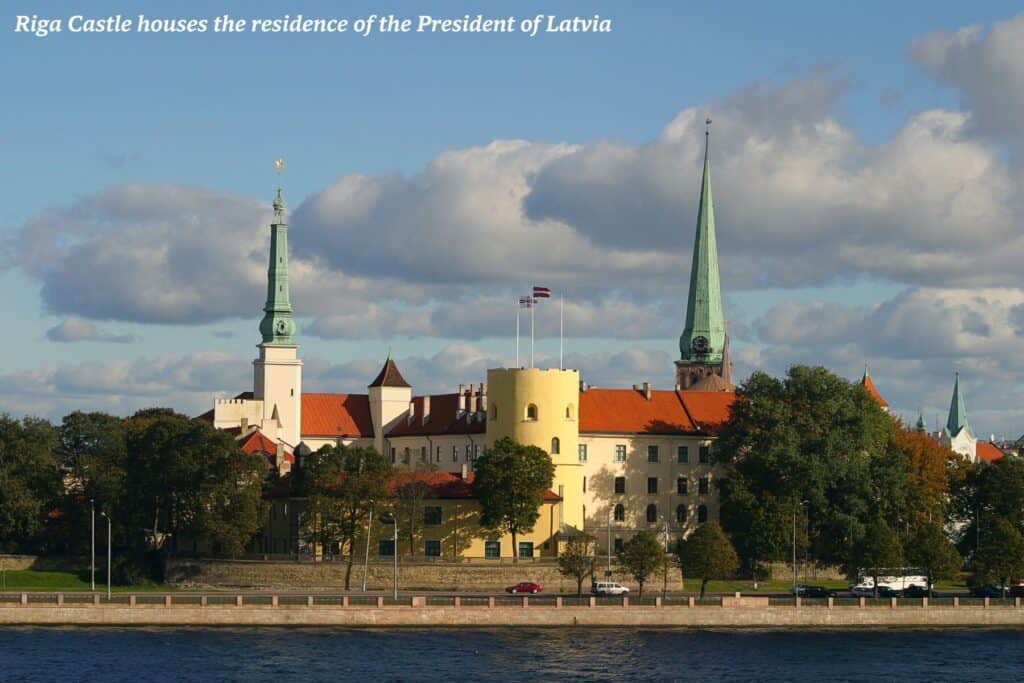
Rīga Castle
The history
At the heart of the Latvian capital, Rīga Castle is unusual among those fortifications built by the German Crusaders in that it is still inhabited to this day.
Its early history is a product of feuding between the Livonian Order – a Catholic military order of German crusaders – and the inhabitants of Rīga. The latter destroyed the Order’s first castle (in a different location) and construction of the present building began in 1330, following a peace agreement between the two groups.
The residence of the Master of the Livonian Order was here, until further conflict between the groups prompted his relocation to the town of Cēsis, presumably in search of a quieter life. The Rīgans destroyed this castle in 1484, an effort that was to prove entirely pointless, as they were forced to rebuild it again under their treaty of surrender.
The castle later became the seat of Polish–Lithuanian, Swedish and Tsarist Russian administrations, before becoming the residence of the President of Latvia in 1922.
The castle
The two circular towers – one with crenellations, diagonally opposite each other – hint at its Livonian Order origins, but the rest of the building is less castle-like in character, its medieval appearance largely removed by later rebuilding.
Its four-storey façade with a balcony in the centre suggests a place of administrative, rather than military power. Following a Soviet interlude as host to the Young Pioneer organisation, it is again the official residence of the President of Latvia, as evidenced by the sentry boxes and a long line of flagpoles.
Most of the building is currently not open to the public, but the castle is preparing to welcome back the National History Museum of Latvia, long in temporary premises following a 2013 fire.
If you’re likely to have extra time while in the capital, our guide to Art Nouveau architecture in the city is worth a read.
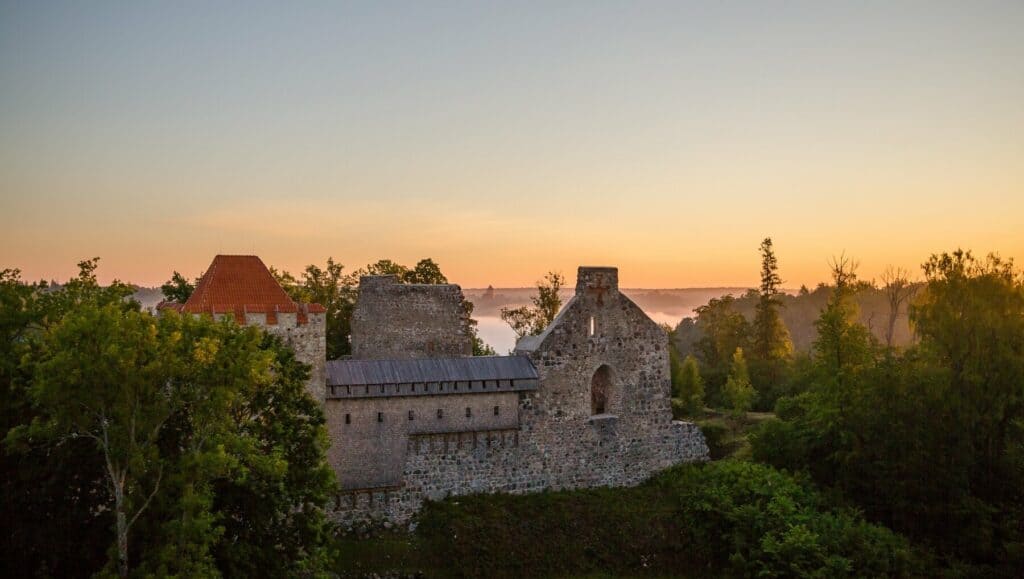
Sigulda Castle
Just 50km from Rīga, close to the wooded valley of the Gauja River, Sigulda presents itself as the adrenaline capital of Latvia. Home to adventurous offerings like speeding in a special padded vehicle down the Skeleton, Luge and Bobsleigh track (a legacy of Soviet-era sporting ambitions) to bungee jumping from the cable car traversing the Gauja, Sigulda attracts thrill-seekers.
Less daring tourism experiences are also available. Sigulda offers a cluster of castles. While the Livonian Brothers of the Sword (forerunners of the Livonian Order) controlled the left bank of the Gauja, the right bank was ruled by a different crusading power; the Bishopric of Rīga. This diversity is reflected in the town’s fortifications.
On the northern edge of town stands Sigulda Castle, built in the early 13th century by the Livonian Brothers. It served as a means of quelling Livonian revolt, controlling the Gauja, and keeping the Bishopric of Rīga over the river in its place.
It was damaged in the Livonian War in the 16th century, and again in fighting between Poland and Sweden. By the 19th century its role was touristic rather than military, serving largely as a romantic ruin. An open-air stage within the ruined castle walls provides the atmospheric setting for the Sigulda Opera Music Festival in late July.
The castle sits within a walled complex that also includes Sigulda New Castle, built in the late 19th century as the summer residence of the Kropotkin family, owners of Sigulda manor.
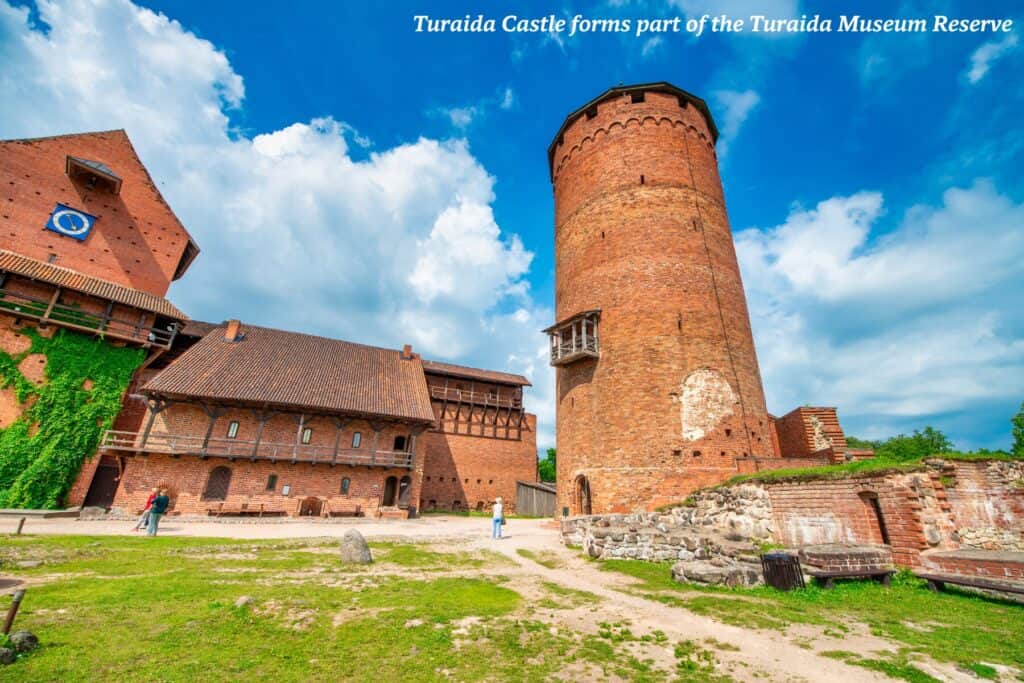
Turaida Castle
Some 5km north of Sigulda, across the Gauja valley on an imposing upland setting, stands the red-brick Turaida Castle. It was built in the early 13th century on the orders of Albert, Bishop of Rīga.
Following decline, it was heavily restored during the Soviet occupation of Latvia, and the resulting structure is impressive. The cylindrical main tower, which served as the castle’s last line of defence, was originally entered through a door 9.5m up, accessed by a wooden ladder which could be removed in the event of attack. It offers an excellent view across the Gauja valley.
Turaida Castle forms part of the Turaida Museum Reserve, spread over 40ha of parkland, and embracing a range of attractions encompassing the earlier occupation of the area by the Livonian people, and its more recent history as an aristocratic estate.
The grounds also include a wooden Evangelical Lutheran church dating from the 18th century, outside of which is a memorial stone to the Rose of Turaida. The stone relates to the tragic early 17th-century tale of Maija, an orphan girl taken in by the clerk of Turaida Castle, who fell in love with young Viktor, gardener at Sigulda Castle. Tragically, Maija was instead pursued by the fiendish Adam, a deserter from the Polish army. To preserve her honour, Maija tricked Adam into slaying her, by pretending that she possessed a magical scarf that protected the wearer from injury and inviting him to swing an axe at her to test it out.
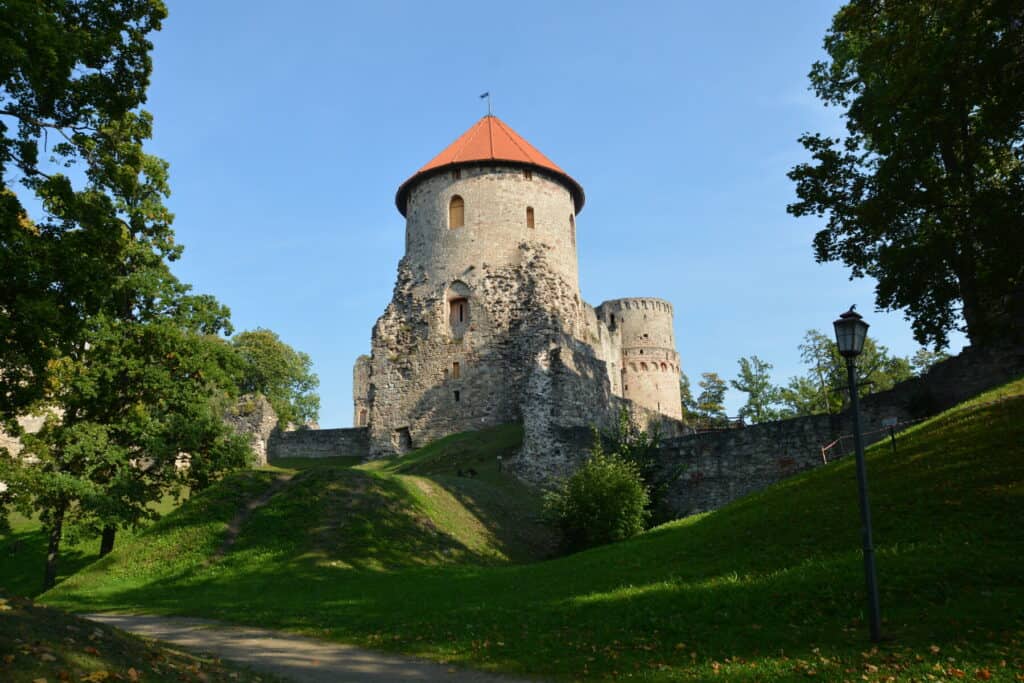
Cēsis Castle
The history
Surrounded by the forests of the Gauja National Park, Cēsis is among the most picturesque towns in Latvia. Its origins lie in a wooden hill fort built by the Baltic Vends. During the Livonian Crusade at the start of the 13th century, the new occupying power built a stone castle here. This was enlarged by their successors, the Livonian Order, and became the headquarters of the Masters of the Order. Cēsis became a wealthy place, an important trading centre, and a member of the Hanseatic League.
The story of Latvia’s castles often involves periods of prosperity followed abruptly by war and tragedy, and this was certainly true of Cēsis in 1577, when the troops of Ivan the Terrible laid siege to the place. The last defenders reportedly opted to blow themselves up rather than be taken by the Russians. Ivan’s forces lost the castle a few months later and in 1578 were defeated by a combined Swedish and Polish force, marking a turning point in the Livonian War. Held by Poland–Lithuania and then Sweden, it was in decline by the late 17th century, and gradually descended into ruin.
The castle
Surrounded by a dry moat, the Old Castle today is an impressive ruin arranged around a central courtyard. Its eastern and southern walls have largely survived.
Before entering the circular Western Tower, you are given a lantern from a lady in medieval dress doling them out from a booth. You climb the tower by lamplight, until reaching a large vaulted room that once housed the Livonian Master’s Chamber. One flight further up, catch a video presentation, taking you through the castle history.
The manor house adjacent to the Old Castle, and included in the entrance ticket, houses the well-organised Cēsis History and Art Museum. In summer the castle grounds house medieval-attired artisans introducing visitors to the crafts of basket-weaving and the like, making this a great place for children.
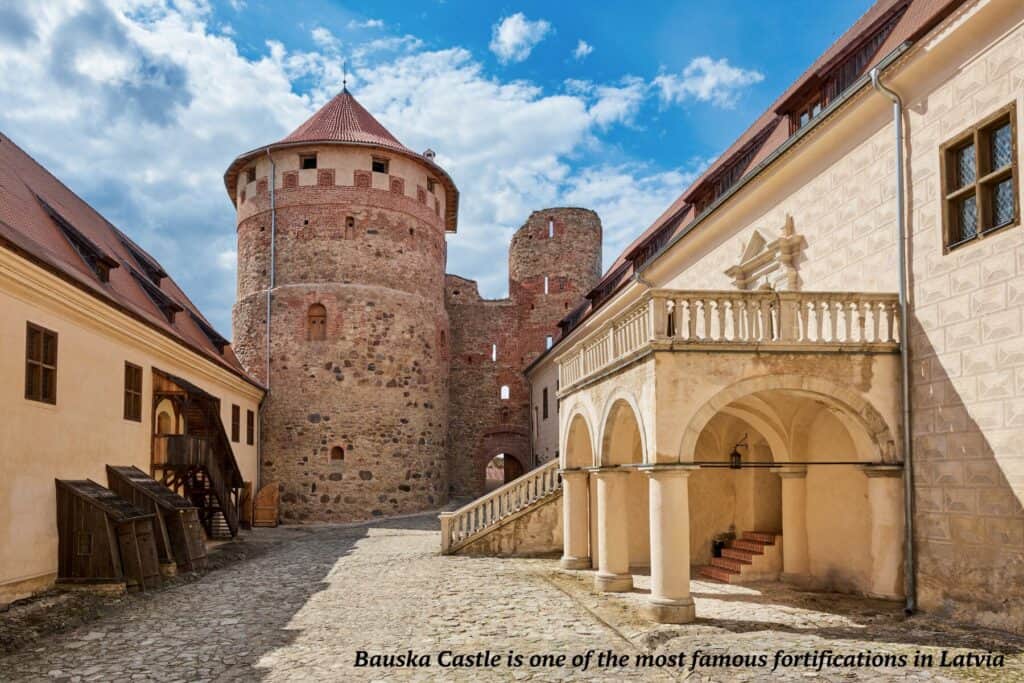
Bauska Castle
In the south of the country, Bauska Castle enjoys one of the most impressive locations of any Latvian castle, built on the peninsula at the confluence of the two rivers. It was built in the 15th century by the Livonian Order to control trade between Rīga and Lithuania, and defend the Order’s southern boundary.
It is really two castles in one, easily distinguishable by their different states of repair. The ruined Livonian Order castle stands on the west side, its reconstructed circular main tower its major feature. Immediately to the east, around a cobbled central courtyard, stands the reconstructed 16th-century Renaissance castle, which served as a residence for the Dukes of Courland and Semigallia.
Its external walls are covered with a striking restored sgraffito decoration, forming a trompe-l’œil effect in which the flat walls appear to be covered by protuberances. A history exhibition inside the building takes the visitor from the Semigallian tribes that ruled the area before the arrival of the Livonian Order, to the gradual descent of the castle into a romantic ruin.
Consider yourself a fortress-fiend? Don’t miss our guides to the best castles in South Wales and the most beautiful châteaux in Dordogne.
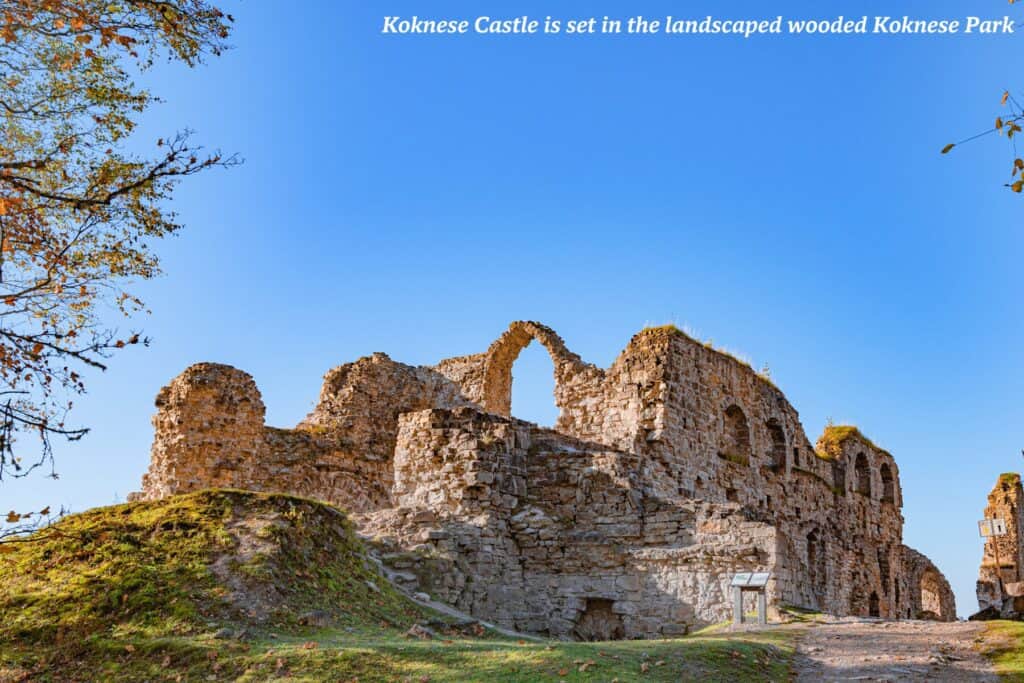
Koknese Castle
Some 100km southeast of Rīga, the ruined Koknese Castle is attractively sited on a promontory between the Daugava and one of its tributaries. It was built in the early 13th century on the orders of the crusading Bishop Albert of Rīga, at a strategic location commanding the trade routes of the Daugava.
The place has suffered numerous predations: ransacked by Ivan the Terrible in the 16th century, and later blown up by a retreating Polish-Saxon army at the start of the 18th to stop the place falling into Russian hands. Its picturesque setting today – the waters of the Daugava lapping at its base – is the result of the 20th-century damming of the river to create the Pļaviņas Hydroelectric Station, relegating the place to water level. For centuries it stood at a more imposing height.
The castle today is set in the landscaped wooded Koknese Park, making for pleasant strolling.
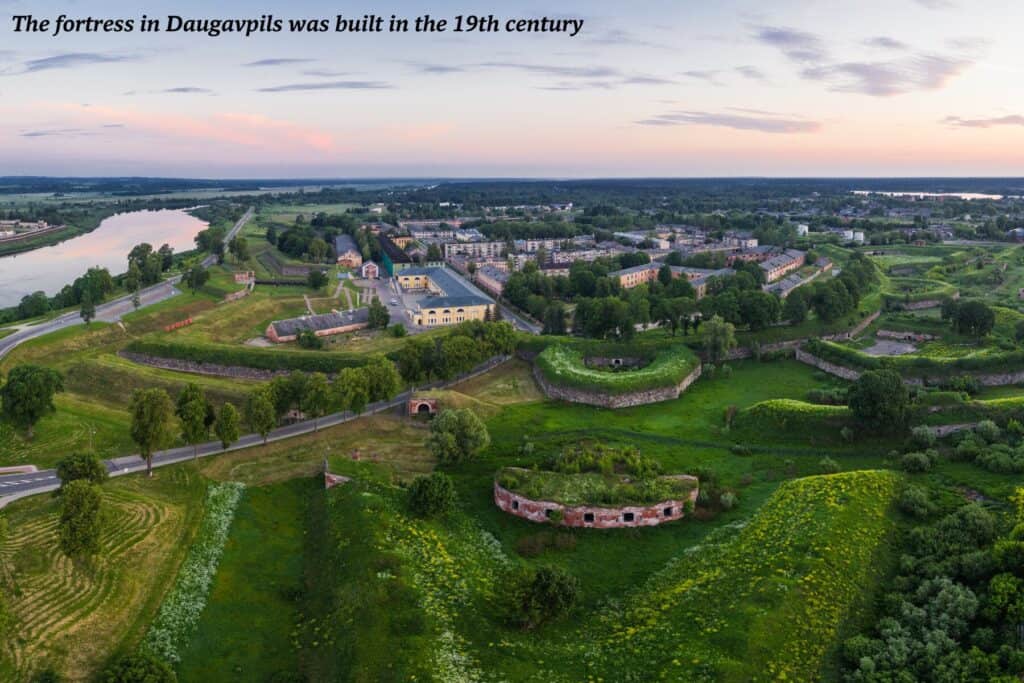
Other castles in Latvia
This is just a starting list.
Latvia’s castles also embrace the hill forts of the Baltic tribes who fell under the control of the German crusaders. While their castles were built of wood rather than stone, their legacies can be found in grassy castle mounds across the country.
At Tērvete in the south, a wooden castle of the Semigallian tribe has been reconstructed. And in Latvia’s second city, Daugavpils, stands a much more recent castle. A large bastion fortress built in the 19th century – based around a technology that was already becoming obsolete at the time of its construction – it is gradually being restored. Today, it hosts an impressive art centre devoted to the work of the great abstract expressionist painter Mark Rothko, who was born in the city.
How to visit the best castles in Latvia
Peak tourist season in Latvia runs from the end of May to early September, with July and August the warmest months. If travelling in the summer, your castle exploration can also be combined with a visit to some of the best beaches in Latvia.
However, Latvia’s castles can be visited year-round, and other seasons bring their own attractions. For more information about when to travel, and what you need to know before you book, see the Latvia travel advice on the GOV.UK website.
All the castles selected above can be reached by public transport on day trips from Rīga, though Cēsis and Sigulda in particular are attractive towns with some great walking in the surrounding natural park, and warrant a longer stay.
If you want to explore more remote castles, renting a car on arrival at Rīga Airport is a good option.
More information
For more information, see our upcoming guide to Latvia or head to Latvia’s official tourism portal for an extensive database of tourist attractions, accommodation, events and other tourism-related content.
The Tourism Department of Investment and Development Agency of Latvia (LIAA) is the national tourism board. Check out their website and explore a land where ancient traditions meet modern wonders, and where every corner tells a story waiting to be discovered.
